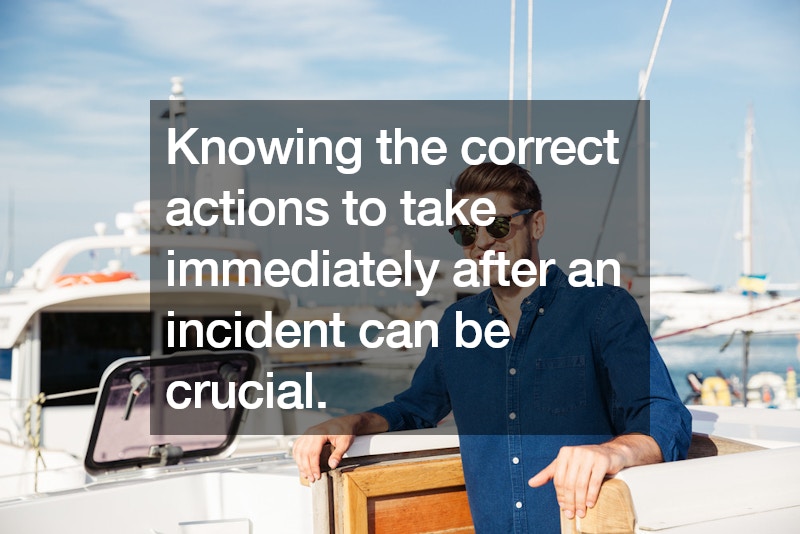A boating accident can be disorienting and chaotic. Knowing the correct actions to take immediately after an incident can be crucial for the safety of all involved and for the legal processes that may follow. Here is a comprehensive guide on what to do if you find yourself in such a situation, specifically focusing on the first action required of a boat operator who is involved in a boating accident.
1. Check for Injuries and Provide Aid
The first action required of a boat operator who is involved in a boating accident is to assess the safety and well-being of everyone on board, as well as other parties involved in the accident. Immediately check for injuries among all passengers.
If there are any injuries, provide necessary first aid, and call for medical help without delay. Your primary responsibility is to ensure that no further harm comes to people.
2. Make the Scene Safe
Once you have ensured that everyone is safe, or if there are no injuries, your next step is to secure the scene to prevent further accidents. This might involve moving the boat out of the way of other water traffic if it is safe to do so. If the boat is significantly damaged and moving it is not possible, take measures to signal distress and alert passing boats to avoid the area. This could involve using flares, lights, or flags depending on what is available and appropriate for the situation.
3. Contact Authorities
It’s crucial to report the accident to the relevant authorities as soon as possible. This might include the local maritime authority, coast guard, or police, depending on where the accident occurred. Reporting the accident is not only a legal requirement but also ensures that you get the necessary official assistance and documentation, which can be vital for insurance and legal processes later.
4. Document the Incident
Document everything about the accident as accurately as you can. This includes taking photos of the scene, writing down details about what happened, and collecting the names, contact information, and statements of witnesses. Also, note the weather conditions, water conditions, and any other relevant environmental factors. This information can be crucial for insurance claims and legal inquiries to establish what happened and why.
5. Exchange Information
If other boats are involved, exchange information with the other operators, including names, contact details, boat registration numbers, and insurance information. Just like in car accidents, this information will be needed for the insurance claims process and any potential legal proceedings.
6. Notify Your Insurance Company
Inform your insurance company about the accident as soon as possible. Provide them with all the details and documentation you have collected. Your insurance company will guide you on the next steps and how to proceed with your claim. This step is crucial in ensuring that you receive the compensation you’re entitled to for damages and losses.
7. Follow Up
After the initial steps, follow up on any medical treatments if there were injuries and stay in touch with the authorities regarding the status of their reports or any investigations. If you’ve hired a lawyer, keep them informed of any new developments and cooperate fully with their advice and instructions.
8. Reflect and Learn
Once everything has settled, take time to reflect on the incident and learn from it. Consider what could have been done differently and how similar accidents might be prevented in the future. If necessary, take additional boating safety courses to improve your skills and knowledge.
Understanding and promptly performing these steps when involved in a boating accident can significantly affect the outcomes for yourself and others. Safety should always be your top priority, followed by adherence to legal responsibilities to ensure that the aftermath of the accident is handled as smoothly as possible. You’ll feel peace of mind that you know all of the steps to complete if a boating accident ever occurs when on vacation.
.

